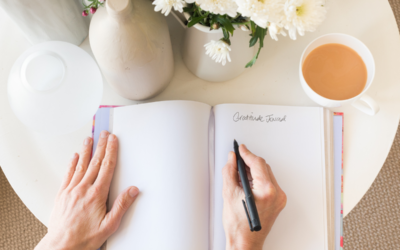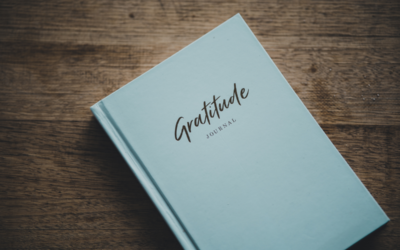Habit Stacking: What Is It and How Can You Use It to Create New Healthy Habits
All of us have habits. The things that we do subconsciously because have become ingrained into our very being such as brushing our teeth and washing our face in the morning.
Habit stacking is the practice of creating a new habit by pairing together a new behaviour with an existing habit and it’s done with the purpose of improving your life in a positive way. The main idea of habit stacking is that each new behaviour is performed right before or after a current well-established habit.
The beautiful thing about habit stacking is that you’re not relying on willpower to create a new habit because you’re piggy-backing new habits you wish to create onto those habits that are already deeply ingrained into your life.
The best way to approach habit stacking is to take a look at what you want to achieve and set out when would be the best time to achieve it. Remember to think small in the beginning, big habits = small habits + time. Write down the habits you want to achieve and then write down the habit you’re going to attach it to.
The habit stacking formula is:
After/Before [CURRENT HABIT], I will [NEW HABIT].
For example:
- If you want to add the habit of meditating into your life, you can use this example:
After I pour my cup of coffee each morning, I will meditate for one minute - If you want to add more gratitude to your life, you can use this example:
After I sit down to dinner, I will say one thing I’m grateful for that happened today.
Once that habit is ingrained, you could start listing four or five things. Eventually, you could add journaling that list of things you are grateful for each day.
Habit stacking also works with modifying existing routines. If you want to break your nightly habit of social media scrolling before bed, you could do the following:
- After making the bed in the morning, put a book on top of the dresser
- After you walk into your bedroom at night, put your phone on the dresser and grab the book
- After getting in bed, read the book for 10 minutes
These little actions can add up to life-changing routines.
Again, the reason habit stacking works so well is that your current habits are already built into your brain. You have patterns and behaviours that have been strengthened over years. By linking your new habits to a cycle that is already built into your brain, you make it more likely that you’ll stick to the new behaviour.
Once you have mastered this basic structure, you can begin to create larger stacks by chaining small habits together. This allows you to take advantage of the natural momentum that comes from one behaviour leading into the next.
The secret to creating a successful habit stack is selecting the right cue to kick things off. Instead of creating a new habit independently, habit stacking implicitly has the time and location built into it. When and where you choose to insert a habit into your daily routine can also make a big difference.
For instance, if you’re trying to add meditation into your morning routine but mornings are chaotic and your kids keep running into the room, then that may be the wrong place and time. Consider when you are most likely to be successful so you can set yourself up for success.
Your cue should also have the same frequency as your desired habit. If you want to do a habit every day, but you stack it on top of a habit that only happens on Mondays, that’s not a good choice.
One way to find the right cue for your habit stack is by brainstorming a list of your current habits. Alternatively, you can create a list with two columns. In the first column, write down the habits you do each day without fail.
For example:
- Get out of bed.
- Take a shower.
- Brush your teeth.
- Get dressed.
- Brew a cup of coffee.
- Eat breakfast.
- Sit down for dinner.
- Turn off the lights.
- Get into bed.
Your list can be much longer, but you get the idea. In the second column, write down all of the things that happen to you each day without fail. For example:
- The sun rises.
- You receive a text
- You check your email
- The sun sets.
Once you have these two lists, you can begin searching for the best place to layer your new habit into your lifestyle.
The Next Step
Habit stacking works best when the cue is highly specific and immediately actionable. People sometimes make the error of selecting cues that are too vague.
For instance, if you want to start a push-up habit: “When I take a break for lunch, I will do ten push-ups.” At first glance, this sounds reasonable. But really it’s unclear, when would you do the push-ups before you ate lunch? After you ate lunch? Where would you do them?
Changing it to: “When I close my laptop for lunch, I will do ten push-ups next to my desk.” Ambiguity gone.
Remember with habit stacking, start small and build upon, or stack the habits. Most people can’t make huge, sweeping changes at once and then sustain them……humans just aren’t designed to maintain that amount of willpower long term, so starting small and building upon them will help you to be successful in creating new habits.
Habit stacking is really a very simple concept but it is also a very, very effective way to create new habits. Got some new habits you’d like to create? Give habit stacking a try!
Trending Articles…
Need Some Help Looking on the Bright Side?
Do you consider yourself someone who looks on the bright side? It's not always easy, but having a positive outlook on life definitely makes life easier. I'm not saying that we should ignore our struggles or pretend that everything is perfect all the time, but having a...
You Can’t Afford to be ‘Active’ When it Comes to Your Money!
Ever imagined sitting on a beach, sipping a drink with an umbrella in it, and not having to stress about heading back to work? I know I have. This seems like an impossible dream, but it’s a reality for many people (and not just those born with splashy trust funds!)....
Take a MOMENT
With wellness becoming a greater focus in our lives, we’re constantly looking for fun new ways we can refresh and re-energise. Here are three different wellness techniques you can try.The ears are a surprising source of stress relief because they’re covered in reflex...
Gratitude
Writing in a Gratitude Journal each day can help increase your overall wellbeing and happiness. Use your journal to refocus on the multitude of positives in your life and create a wonderful treasure to reflect on as you navigate life. I have often looked back upon my...
Do you have a love-hate relationship with exercise?
Exercise can bring up a lot of funky feelings. You may be self–conscious about your athletic skills, that was me. Or you may be stuck in this story where you think you hate exercising. You might think exercise is something you “have” to do. Or maybe you think that if...
Are You a Tired Momma?
It's such an important part of our lives, but how much thought have you given to what goes into getting a good night's sleep? It wasn't until I became a sleep-deprived mom that I truly appreciated the importance of sleep (for myself and my daughter). Not only is it...






